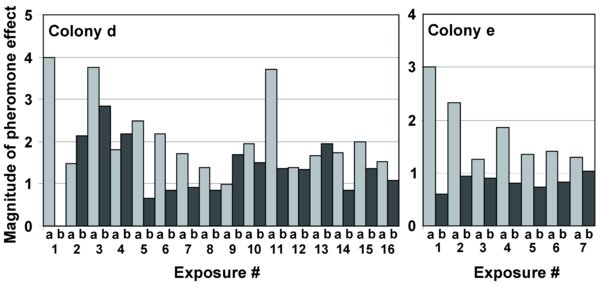Figure 3

Effect of repeated exposures to artificial recruitment pheromone over several weeks on bumblebee traffic from the nest to the foraging arena in two colonies (colonies d and e). Each column shows the magnitude of increase in bumblebee traffic leaving the nest during a period of pheromone application compared to control activity period. Light grey (a) and dark grey (b) columns correspond respectively to the first and second exposures to the pheromone in the ‘brief exposures’ experiment (second exposures generally produced a lower increase in traffic). The magnitude of the response to the pheromone does not decrease significantly with the number of repeated exposures. The potential trend towards a decrease in effectiveness of pheromone application at increasing bee traffic is due to an increase in the basal traffic level as colonies age and grow in size over time (colony d: from 1 bout per five minutes during exposure 1a to 35 bouts during exposure 16b; colony e: from 8 bouts per five minutes during exposure 1a to 24 bouts during exposure 7b). As greater numbers of bees are active during control phases, fewer bees can be recruited following pheromone application.


